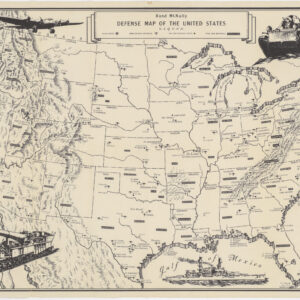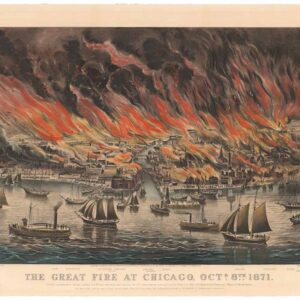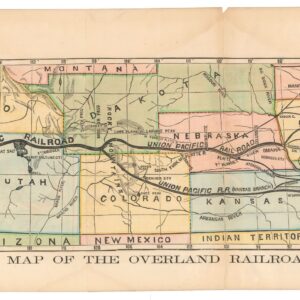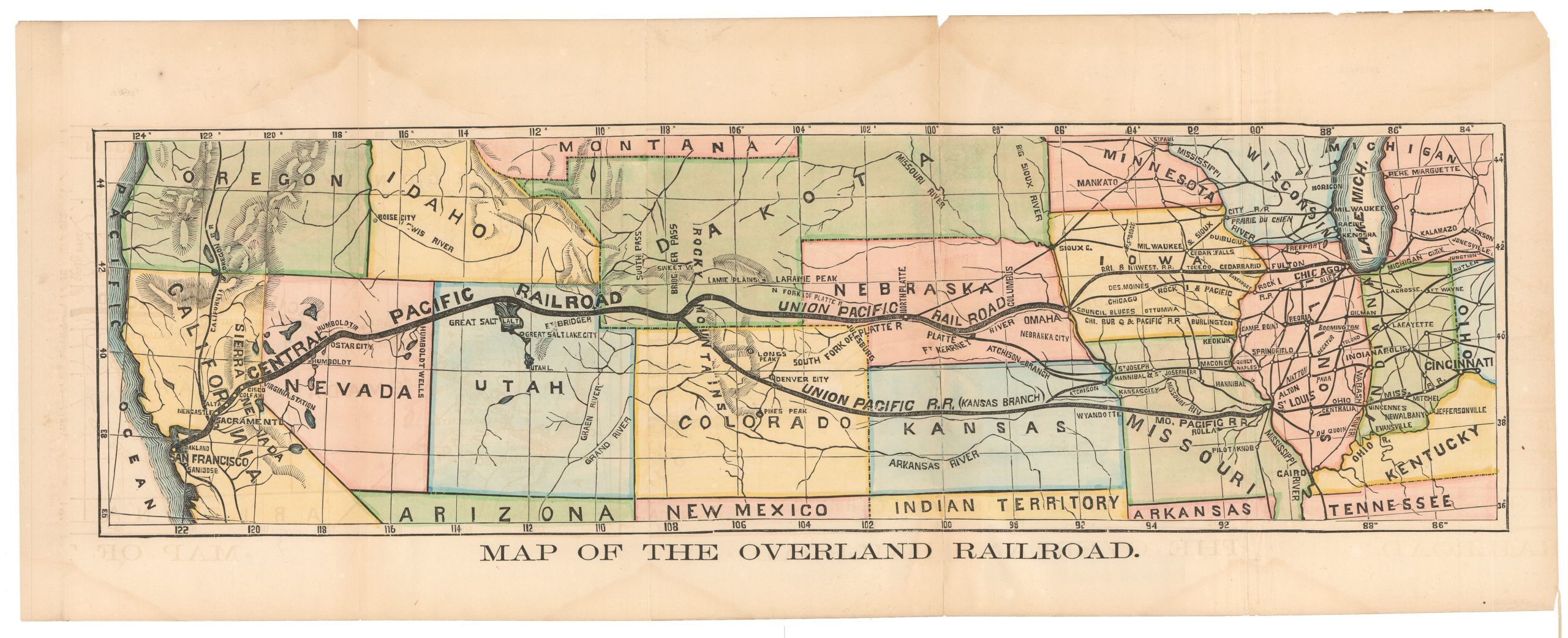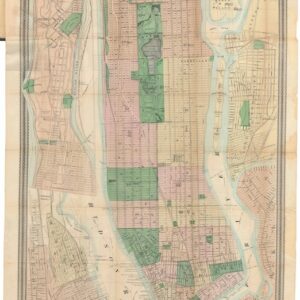A noteworthy and era-specific snapshot of North American geography and exploration during the early 19th century.
Charte Von Nord America Entworfen und gezeichnet von C.G. Reichard…Erganztr und nach den neuern Entdeckungen desr Hrn. Lewis, Clarke n. Pike…1817.
$1,600
1 in stock
Description
Christian Gottlieb Reichard’s 1817 Charte von Nordamerica is a rare medium-format cartographic representation of the continent and its colonial and national subdivisions in the early 19th century. It was issued shortly after the publication of Scottish mapmaker John Melish’s influential map of North America (1816), which in turn was among the first charts to draw on Nicholas King’s cartographic compilations from the notes and reports of Lewis and Clark. In this sense, our mapping conveys cutting-edge information that has only recently become available to European mapmakers. On the Pacific Coast, San Francisco is clearly shown on the map despite the early date.
In addition to depicting the new and independent republic of the United States, the map also shows the colonial holdings of a number of European states, including some of the more obscure colonizers like Holland, Sweden, Denmark, and Russia. The varying spheres of geo-political interest and control are demarcated using vivacious hand-coloring, with pink representing England, yellow for the United States, blue for Spain, and green for French domains. In this way, Reichard’s map provides a detailed view of North America’s latest political configuration.
Particular emphasis is on the west and northwest regions, and the map showcases some of the latest discoveries of the interior and includes a range of notable features and geographic elements that hitherto had yet to be part of the cartographic repertoire. One striking aspect is the inclusion of the northwest and west of the Mississippi River Valley. These were regions only sporadically explored at the time, and this map offers modern viewers a poignant insight into the state of geographical understanding. The Missouri River is also rendered in considerable detail, with the Jefferson, Madison, and Gallatin branches being fully delineated. An inset map, Nordwestlichster Theil von Nord America, provides further detail on the Pacific Northwest.
The California and Oregon interior remains relatively void of detailed and reliable information. An interesting case study is seen in the delineation of two incongruous mountain ranges. One is enormous, running from western Canada down to southern California. Labeled the Rocky Mountains, this feature confounds the American range and the smaller, more coastal Sierra Nevadas. The confusion is not strange, as much of California’s interior remained relatively unexplored. It would be another three decades before the Gold Rush would spur a more detailed mapping.
A second range is even more out of place. Extending from Southern California, a secondary cordillera entitled Berge des Platten Flusses (Mountains of the Platte River, about the southern branch of this significant tributary to the Missouri) runs northeast across the Mojave Desert and Great Basin.
In the Pacific Northwest, near the Canadian border, we note that the Columbia River is depicted as turning due north. Further south, Spanish provincial governments in the Louisiana Territory are identified, including New Orleans, Mississippi, and Louisiana. Even within the borders of the United States, we find boundary configurations that were not to last. The state of Georgia, for example, stretches from the Atlantic to the Mississippi River Valley, including New Orleans.
Many of the features on this map – especially as they pertain to ‘The West’ – drew on the latest explorations and discoveries. Indeed, the title acknowledges not only Lewis & Clark but also the explorations of American Brigadier General Zebulon Pike, who in 1805/6 reconnoitered the northern reaches of the Mississippi River. The following year, he crossed the Rocky Mountains into southern Colorado. Nicholas King’s contributions to the cartography of North America, in particular his map drawn for the War Department based on the notes of Lewis and Clark, are acknowledged in the associated text.
Census
The OCLC lists only two institutional holdings of Reichard’s 1817 map, both in Germany (OCLC no. 214320875). We have also identified an example of the map in the Beinecke Library of Yale University (Object ID. 15535340).
The 1817 state should not be confused with Reichard’s map from 1802, also titled Chart von Nordamerica (OCLC. No. 1091655558). More importantly, perhaps, is the distinction of this map from the 1807 map with the same title by Johann Walch (OCLC no. 605219242), which includes a depiction of the failed ‘State of Franklin’ in East Tennessee/West Virginia. This flight of fancy had primarily been shut down by the mid-1790s when Tennessee achieved statehood (1796), but it still appeared on Walch’s map. By the time Reichard’s issued this edition of his map, no evidence of the State of Franklin remained.
Cartographer(s):
Christian Gottlieb Reichard (1758-1837) was a German legal scholar who, despite his profession as a town clerk in Bad Lobenstein, developed a profound passion for geography, history, and cartography. His interest soon overshadowed his legal career, leading him to pursue cartographic endeavors alongside his clerical duties.
Reichard’s most notable contributions to cartography include the creation of the Atlas des Ganzen Erdkreises in der Central Projection (Atlas of the Whole World in the Central Projection) in 1803 and the Orbis terrarum antiquus (Atlas of the Ancient World) in 1824. Additionally, he is credited as one of the earliest cartographers to use the Albers conic projection.
Reichard’s maps were renowned for their exceptional accuracy during his time. His meticulous attention to detail and straightforward style made his output highly sought after for publication, leading him to collaborate with fellow cartographers on famous atlases, such as Stieler’s Handatlas.
Condition Description
Very good.
References
